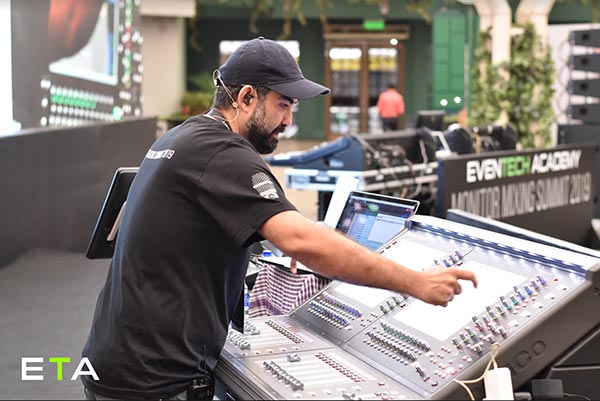Mixing for Large Concerts
by Fali Damania
Sound for large events requires special attention. In the next few paragraphs I will enlist ways to get the best possible result leaving your audience satisfied and hopefully the job Secure!
As a mix engineer it is our responsibility to make certain decisions with regards to the aural representation of the production. Be it overall loudness, spectral balance or genre specific treatment, certain decisions need to be thought of and made way in advance. Here are a few strategies I use to tackle sound for some of the largest events, be it Music, Sporting or Corporate.

Catch up on SLEEP
YES!! I ensure I get 2 full days of rest before any major event. Lack of sleep has a way of altering your hearing response. This manifests into issues like sinus and a feeling of blocked ear and nasal canal. This in turn would lead to un-natural equalization resulting in the source sounding harsher and unpleasant.
Never underestimate the importance of a venue walk around. Front to back, top to bottom. If nothing else you would add 5000 steps to your daily workout kitty. Listen specifically for drastic tonal and volume changes along your walk. This would be an easy giveaway of any inconsistencies in the sound system, be it inefficient coverage or dead circuits. I generally also tend to focus more on HF than LF. I would rather have slightly less LF in certain areas as opposed to having less HF. HF means clarity and any decision with regards to HF must supersede any other.
RTA System and SPL monitoring System
Carry your own trusty RTA System and SPL monitoring System. Yes as a sound engineer it is as important an investment as the best microphone on the block. The above are two things I would never travel without. These two tools give me consistency in tone and volume be it a show for 100 or 100,000 people.
Volume (How loud is too Loud)
No real hard and fast rule here. The question is, ‘How does one measure loudness?’ What I would consider loud for me, as a sound engineer, would be overkill for a general audience member. As sound engineers our listening threshold is much higher than the average concert goer. Pacing loudness makes the concert experience more exiting. The Softest soft to the loudest loud makes for a more dynamic and exciting experience for the audience. Choose, which would be the softest and loudest, sections of the concert, and pace your loudness accordingly.
103 dBA averaged over 15 minutes measured around 100 feet from the stage for a large concert is what I use.
103 dBA averaged over 15 minutes measured around 100 feet from the stage for a large concert is what I use. Also note... loudness being a function of HF, it serves no purpose to turn up LF and Subs. This just results in things sounding flat and muddy.
Choice of equipment
Agreed we all have our favorites when it comes to PA systems, Microphones and consoles. Make equipment decisions based on what works for the genre and the artist and NOT what suits your fancy. For example, the best condenser Vocal microphone won’t necessarily suit a heavy Rock and Roll Singer. Just like certain PA systems are very genre specific. I wont get into these specifics because most of you reading this will know what I mean. To put things in perspective, understand that you are the last line of defense between a source from stage and the audience’s ears. Now go ahead and plan your next move.
Mixing is a delicate blend of the artists vision, your vision and the impression you wish to impart to your audience. I will almost never take on a large mixing project if I don’t have access to a multi-track of at least 1 show of the client. I would listen to the material non-stop for a few days, and then get stuck into a multi-track mixing session. This session would include, building snapshots and notes for each song, and at times multiple snapshots per song. I want to get into the show knowing as much of the material as possible before hand, and being prepared in advance. There is nothing worse that being in an event and not knowing your cues. Large concerts give us the liberty of time and a large crew; there should be no reason for us to not do our homework before showing up to work.
Considering that I need to have my hearing in best condition over a 3-hour concert duration, I tend to spend as little time with the PA at “full volume” before that show. I will always have a pair of near field monitors, and do a decent amount of balancing to those monitors, again something that I trust and that translates well to the PA system. Sound-check of individual channels is usually done on PA, but post this checking of snapshots and mix balance usually on near fields, not at an unreasonable volume, regularly checking every few seconds on the House. I have found this process to be the most effective for keeping the ears as fresh as possible before the event commences.
Hope these tips, help in providing a insight into achieving consistency in your FOH mixes. Mix on.